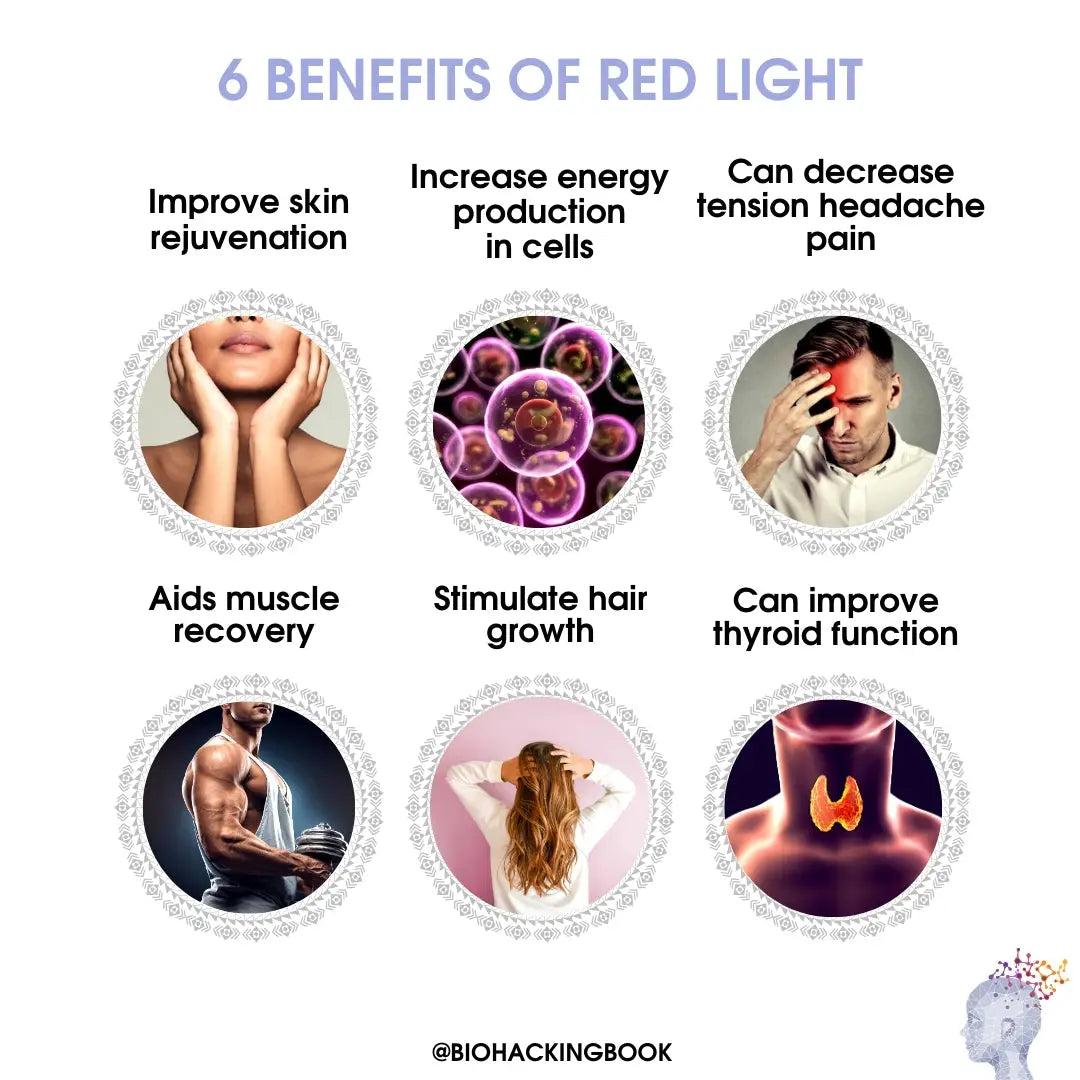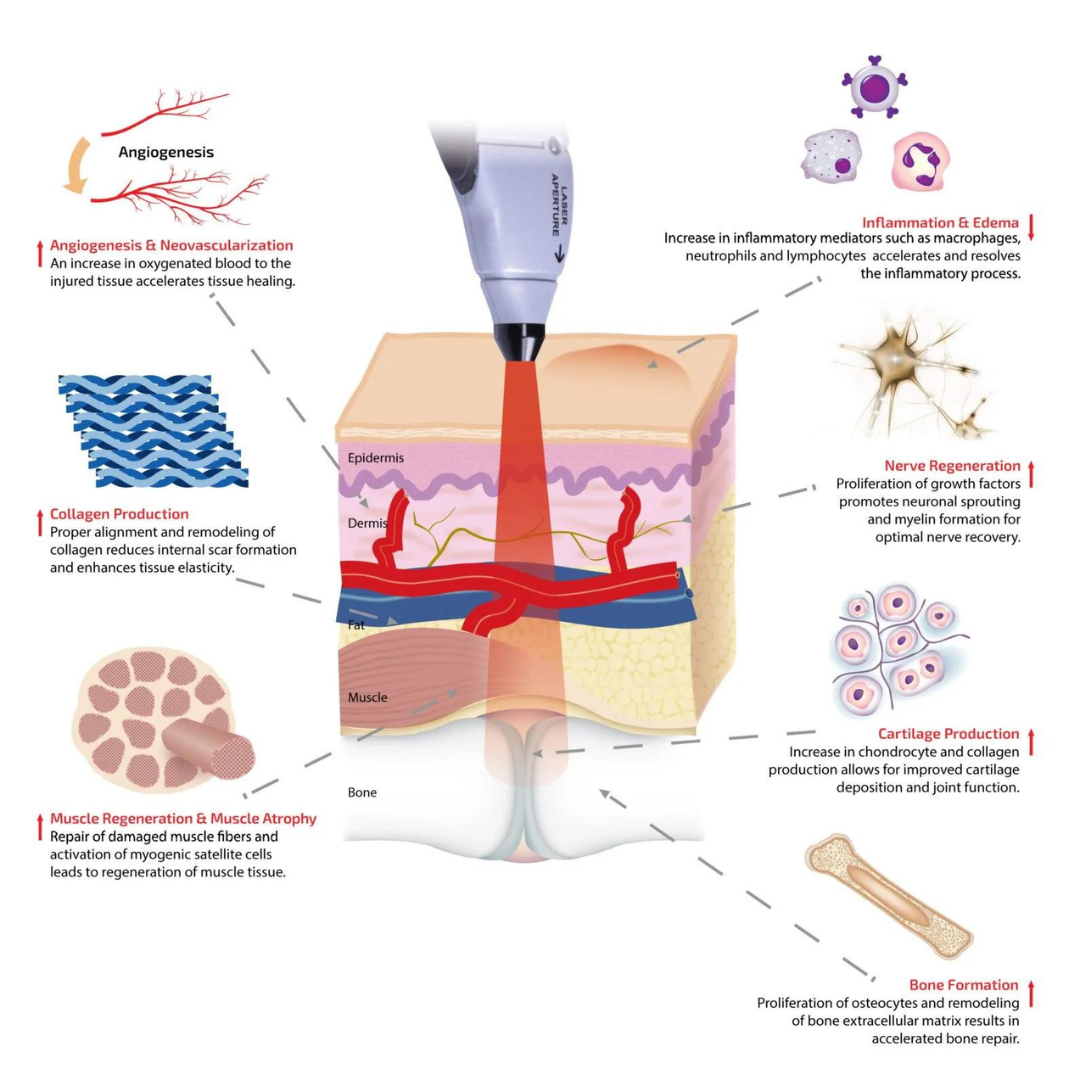Top Guidelines Of Photobiomodulation
Wiki Article
Photobiomodulation Fundamentals Explained
Table of ContentsThe 8-Second Trick For PhotobiomodulationPhotobiomodulation for DummiesThe Greatest Guide To PhotobiomodulationSome Known Details About Photobiomodulation
Laser therapy is a medical therapy that utilizes focused light to promote a procedure called. Throughout PBM, photons go into the cells and communicate with the cytochrome c complicated within mitochondria. This interaction sets off an organic cascade of occasions that causes an increase in cellular metabolic rate, which can as well as accelerate the healing process.There is agreement that the application of a restorative dosage of light to impaired or useless tissue leads to a cellular reaction mediated by mitochondrial devices. Photobiomodulation. Researches have actually revealed that these changes can impact pain and swelling, in addition to, tissue repair work
Modifications in ATP, responsive oxygen varieties and nitric oxide adhere to light absorption by Cc, O. These results are redox state and dosage dependent.

Things about Photobiomodulation
PBM gadgets have been cleared for marketing by FDA with the Premarket Notification/510( k) procedure as adjunctive tools for the momentary alleviation of discomfort. These clearances were based upon the discussion of medical data to support such insurance claims (Photobiomodulation). In this treatment, a source of light is put near or touching the skin, enabling the light energy (photons) to permeate tissue where it interacts with chromophores found in cells leading to photophysical and photochemical modifications that cause modifications at the molecular, mobile and cells degrees of the bodySurprisingly, recent research indicates that light can improve efficiency in typical tissues and cells. The potential applications of PBMT are numerous and are being checked out experimentally at the standard scientific research, pre-clinical and professional degree. The existing scientific uses are for the relief of discomfort and inflammation and the treatment of sports injuries.

The treatment specifications and variety of sessions needed for PBMT are dependent upon area and reason. PBMT typically calls for greater than one treatment for optimum discomfort alleviation. It might take several treatments for the outcomes to become noticeable. records that it can take anywhere from 8 to 30 sessions for a therapy to be completely efficient, and some people locate it needed to undertake therapy 2 to 4 times per week.
Photobiomodulation - Truths
Therapy criteria for PBMT were initially developed using cells artificial insemination and in little pet models. These therapy criteria generally had a reduced irradiance and fluence and functioned well for cutaneous applications. When medical professionals began to make use of PBMT to deal with frameworks that were located deeper in the body, they made use of these parameters with adverse results.
We now comprehend that these negative research studies were due to inaccurate tool and therapy parameters for transcutaneous therapy of much deeper frameworks. Recent advances in laser treatment devices and more research study right into the ideal dosages have substantially improved the results of PBMT. For dealing with deep cells, the wavelength of light used figures out the deepness of penetration right into a tissue.
It is vital that a clinician makes use of the ideal wavelength our website of light and criteria to deal with a condition. One wavelength and one set of therapy criteria will not be effective for all conditions. Negative side results have not been reported from the use of PBMT.
Not known Facts About Photobiomodulation
In the first experiment, Dr. Endre Mester, used cut rats and observing exactly how the laser affected their ability to expand hair contrasted to the group that was not obtaining LLLT. He discovered that the group of mice obtaining LLLT were able to expand their hair back faster than the team of mice that didn't obtain LLLT (Hoon C, et al; 2012).This treatment is described in this manner to set apart the difference in between the lasers some professions make use of to cut (eg. in surgical procedures, or dental treatments). Low-level light therapy is painless, non-invasive therapy. It is used to reduce inflammation, swelling, and persistent joint conditions, reduce pain and increase injury healing of nerves and cells (Hoon C, et alia; 2012).
LLLT has a biphasic action, implying that lower doses are usually seen to be a lot more useful than greater dosages. That being stated, dosages greater or reduced than the optimal dose doesn't impact (Hoon C, et al; 2012). For this factor, it can be hard to have researches on LLLT with many specifications.
Some firms incorporated both (LED and laser) to provide a more well-shaped therapy since site link lasers can penetrate deeper than LED and infrared light (Norman Doidge, The Brain's Way of Healing, 2015). Throughout therapy, the location that is being treated is revealed to LED you can look here light from a Bio, Flex Laser, which goes to 660 nm wavelength, followed by infrared light at 830-840 nm wavelength.
Report this wiki page